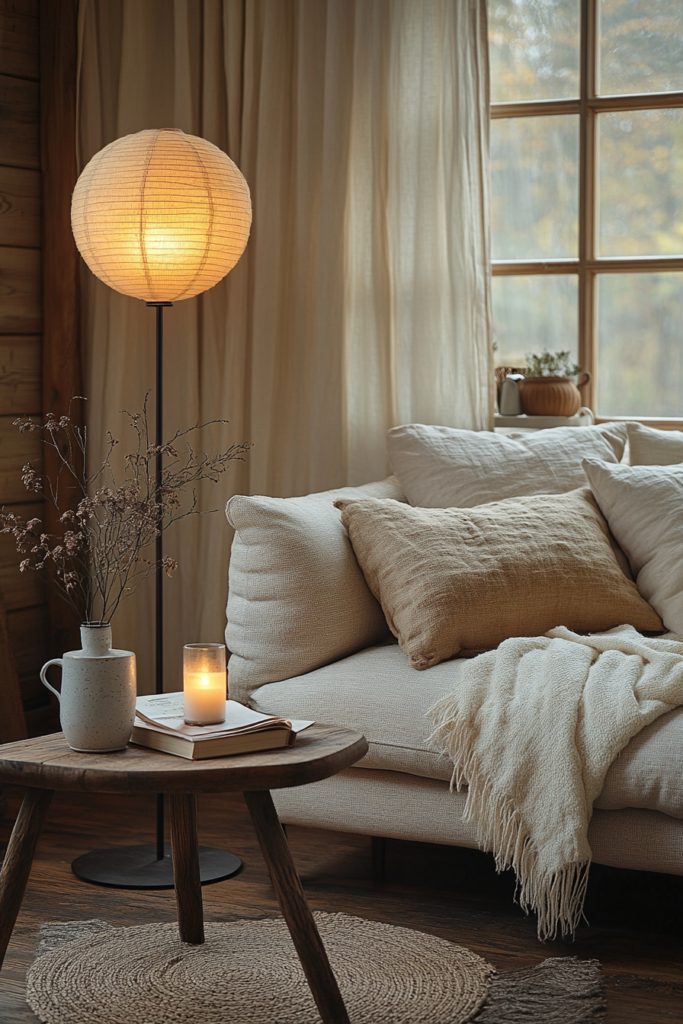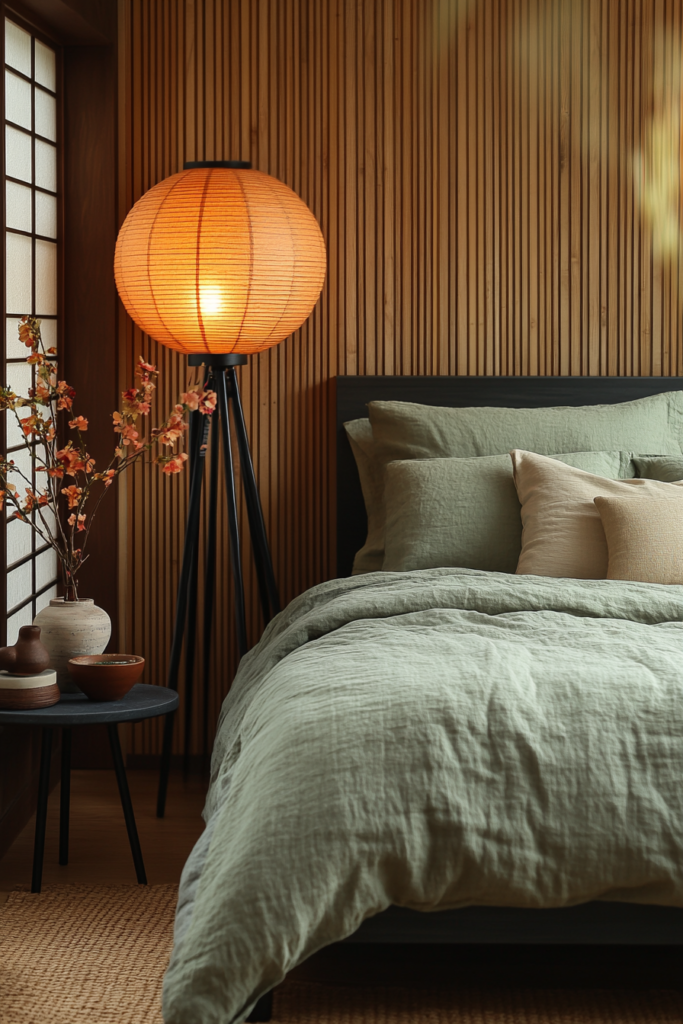Designing a living room that feels both stylish and inviting can sometimes feel like a challenge, but the Scandinavian approach makes it effortlessly achievable. Known for its blend of minimalism, functionality, and cozy comfort (hello, hygge!), Scandinavian design transforms any space into a serene retreat. Whether you’re starting from scratch or looking to refresh your …
What Defines Scandinavian Living Room Design?

The Core Principles
Scandinavian design is renowned for its ability to combine simplicity with comfort, creating spaces that feel inviting yet effortlessly stylish. At its heart lies a philosophy of minimalism and functionality, where every item serves a purpose while contributing to the overall aesthetic. Rooted in the Nordic lifestyle, Scandinavian living rooms prioritize creating a sense of warmth and harmony, even in the simplest settings.
The hallmark of this style is its neutral color palette, dominated by shades of white, gray, and beige, complemented by soft earthy tones. These hues reflect natural light and make the space feel open and airy. Additionally, Scandinavian design emphasizes decluttered environments, ensuring every item has its place while leaving room to breathe.
Materials and Textures
Materials play a crucial role in creating the cozy yet elegant feel of a Scandinavian living room. Think natural woods, often in lighter finishes such as oak, pine, or ash, paired with soft textiles like wool, linen, or cotton. These textures add a sense of depth and warmth, balancing the minimalist aesthetic.
For a true Scandinavian touch, focus on layering textures. A simple linen sofa can be transformed with the addition of a chunky knit throw, plush cushions, or a sheepskin rug. The interplay of these materials ensures the space feels inviting, even on cold winter days. Moreover, the design ethos aligns closely with sustainability, favoring eco-friendly and durable materials that age gracefully over time.
Key Elements of a Scandinavian Living Room

Neutral and Light Color Palettes
A Scandinavian living room begins with a foundation of light and neutral colors. Walls painted in white or soft gray provide a blank canvas that amplifies natural light and creates a sense of spaciousness. These colors also act as a soothing backdrop, allowing furniture and décor to stand out without overwhelming the space.
For added interest, incorporate subtle pops of color. Muted tones like sage green, dusty blue, or soft terracotta bring life to the room while maintaining the calm, cohesive look. Use these shades sparingly through decorative accents like pillows, artwork, or vases for a polished yet understated effect.
Furniture and Layout
Scandinavian-style furniture is all about clean lines and functionality. Choose pieces that are streamlined and purposeful, with no unnecessary ornamentation. A typical Scandinavian sofa features low-profile arms and simple upholstery, often in neutral tones, while coffee tables and shelving units lean on minimalist designs in light woods or white finishes.
The layout is equally important. Furniture should be arranged to create a sense of openness and flow, with plenty of negative space. Avoid overfilling the room; instead, focus on key pieces that anchor the space. For instance, a single statement armchair or a sleek floor lamp can add personality without disrupting the clean aesthetic.
Incorporating Natural Light
Natural light is a cornerstone of Scandinavian design. With the long, dark winters in Nordic countries, homes are designed to maximize any available sunlight. Large, unobstructed windows are ideal, but if your space doesn’t allow for them, you can still achieve a light-filled look.
Opt for sheer curtains in white or light gray to filter sunlight softly, or leave your windows bare for an even brighter effect. Mirrors are another brilliant tool for enhancing light—position one opposite a window to reflect and distribute light throughout the room. Lastly, keep artificial lighting warm and cozy by using floor and table lamps with soft, yellow-toned bulbs.
Hygge and Cozy Accents
The Scandinavian concept of hygge—a Danish word for coziness and comfort—takes center stage in the living room. Soft furnishings like wool throw blankets, textured cushions, and plush area rugs are essential for adding warmth and inviting you to curl up on a chilly evening.
Create ambiance with candles, string lights, or a fireplace, which not only provide additional warmth but also foster a sense of intimacy. Potted plants and greenery bring a refreshing natural element to the space, contrasting beautifully with the muted color palette. Whether it’s a fiddle leaf fig in the corner or small succulents on the coffee table, plants are an easy way to breathe life into your Scandinavian living room.
Scandinavian Living Room Trends for 2024

Modern Color Infusions
While traditional Scandinavian design focuses on neutral tones, 2024 trends introduce subtle pops of modern color. Shades like sage green, dusty pink, and terracotta are becoming popular accents, blending harmoniously with the classic neutral palette. These hues add a soft vibrancy without overwhelming the minimalist aesthetic.
Incorporate these colors through small, intentional touches. Think throw pillows, artwork, or ceramic vases. By keeping these accents understated, the overall serene vibe of the room is preserved while adding a contemporary twist.
Bold Minimalism
Minimalism continues to dominate Scandinavian living room design, but with a bolder edge. Statement furniture pieces, such as sculptural chairs, oversized pendant lights, or uniquely shaped coffee tables, are becoming focal points in otherwise restrained spaces. These bold elements inject personality and intrigue while adhering to the clean lines and functional ethos of Scandinavian style.
The key is balance—limit bold pieces to one or two per room to ensure they stand out without creating visual clutter. Let these items shine against the simplicity of the room’s backdrop.
Sustainable Choices
Sustainability remains a core principle of Scandinavian design, and 2024 is seeing an even stronger emphasis on eco-friendly materials and processes. From furniture crafted with reclaimed wood to biodegradable textiles, the focus is on creating beautiful spaces that are kind to the planet.
DIY upcycling is another trend gaining momentum. Repurposing old furniture or crafting unique decorative pieces not only aligns with the sustainability ethos but also adds a personal touch to your living room.
Step-by-Step Guide to Designing Your Scandinavian Living Room
Start with a Blank Canvas
To achieve a Scandinavian look, begin by decluttering your space. Remove unnecessary items and focus on creating an open, airy room. Once the space is clear, choose light, neutral colors for the walls—white, soft gray, or beige are excellent options that reflect light and provide the perfect backdrop.
For flooring, consider natural wood or laminate in light finishes. If you have existing dark floors, layer a large area rug in a neutral or geometric pattern to brighten the room and add texture.
Select Essential Furniture
When selecting furniture, prioritize pieces that are functional and stylish. Opt for sofas and chairs with clean lines and neutral upholstery, and pair them with simple coffee tables or shelving units in light wood finishes. Scandinavian furniture often features tapered legs, which give the pieces a lightweight, airy feel.
If you’re shopping for Scandinavian furniture, brands like IKEA, Muuto, or local craftsmen often carry excellent options. Multi-functional furniture, such as a sofa bed or a storage ottoman, works particularly well in smaller spaces.
Add Personal Touches
While Scandinavian design is known for its simplicity, it doesn’t mean your living room should feel impersonal. Add your personality through carefully chosen accents like family heirlooms, travel souvenirs, or framed artwork. The key is to incorporate these elements sparingly to maintain the clean aesthetic.
You can also blend styles subtly. For example, pairing a minimalist Scandinavian sofa with a vintage coffee table or a mid-century lamp can create a harmonious and unique look.
Scandinavian Living Room Styling Tips for Small Spaces
Space-Saving Furniture
In small living rooms, multi-functional furniture is your best friend. Consider foldable tables, wall-mounted shelves, or a sofa with built-in storage. Look for pieces that serve multiple purposes while maintaining the sleek and simple look characteristic of Scandinavian design.
Compact yet functional pieces, like a ladder-style bookshelf or nesting tables, can also help maximize your space without overcrowding it.
Creating the Illusion of Space
Use design tricks to make a small living room feel larger. Light-colored walls and floors are essential, but you can enhance the effect with reflective surfaces like mirrors or glass-topped furniture. Arrange furniture to encourage flow, keeping larger pieces like sofas against walls to open up the center of the room.
Opt for smaller-scale furniture that doesn’t dominate the room. For example, choose a loveseat instead of a full-sized sofa or slim-legged chairs that give the illusion of extra space.
Keeping It Cozy in Compact Rooms
Even in small spaces, coziness is a must. Layer soft textiles—like wool throws, linen cushions, and shaggy rugs—to create a warm and inviting atmosphere. Use lighting strategically: table lamps, string lights, or a small pendant lamp can provide gentle illumination without taking up much space.
Adding a touch of greenery, even a small plant on a side table, can refresh the space while staying true to Scandinavian principles.
Scandinavian living rooms strike a perfect balance between minimalism, functionality, and warmth, making them ideal for creating stylish yet practical spaces. Whether you’re working with a spacious home or a cozy apartment, this design philosophy offers endless inspiration to transform your living area. Start with light, neutral tones, invest in functional yet beautiful furniture, and add your personal touch with cozy accents and greenery.
As you bring Scandinavian design into your home, remember that the essence of this style lies in simplicity and comfort. Take your time, layer thoughtfully, and enjoy the process of curating a space that reflects both your personality and the timeless charm of Nordic aesthetics.













